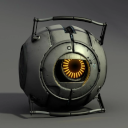3GPP has an interesting way of serialising bools on the wire with ASN.1
NULL OPTIONAL
meaning only the type would be stored if true, otherwise it won’t be set at all
Back in the day when it mattered, we did it like
#define BV00 (1 << 0) #define BV01 (1 << 1) #define BV02 (1 << 2) #define BV03 (1 << 3) ...etc #define IS_SET(flag, bit) ((flag) & (bit)) #define SET_BIT(var, bit) ((var) |= (bit)) #define REMOVE_BIT(var, bit) ((var) &= ~(bit)) #define TOGGLE_BIT(var, bit) ((var) ^= (bit)) ....then... #define MY_FIRST_BOOLEAN BV00 SET_BIT(myFlags, MY_FIRST_BOOLEAN)Pl/1 did it right:
Dcl 1 mybools, 3 bool1 bit(1) unaligned, 3 bool2 bit(1) unaligned, … 3 bool8 bit(1) unaligned;
All eight bools are in the same byte.
True.
Well storing that would only take half a bit.
It’s far more often stored in a word, so 32-64 bytes, depending on the target architecture. At least in most languages.
if wasting a byte or seven matters to you, then then you need to be working in a lower level language.
It’s 7 bits…
Pay attention. 🤪
7 bytes! Look at Mr. Moneybags here!
Well when it comes to bytes, you could say I’m a bit of a millionaire myself.
Wait till you find out about alignment and padding
The 8-bit Intel 8051 family provides a dedicated bit-addressable memory space (addresses 20h-2Fh in internal RAM), giving 128 directly addressable bits. Used them for years. I’d imagine many microcontrollers have bit-width variables.
bit myFlag = 0;Or even return from a function:
bit isValidInput(unsigned char input) { // Returns true (1) if input is valid, false (0) otherwise return (input >= '0' && input <= '9'); }We could go the other way as well: TI’s C2000 microcontroller architecture has no way to access a single byte, let alone a bit. A Boolean is stored in 16-bits on that one.
Nothing like that in ARM. Even microcontrollers have enough RAM that nobody cares, I guess.
ARM has bit-banding specifically for this. I think it’s limited to M-profile CPUs (e.g. v7-M) but I’ve definitely used this before. It basically creates a 4-byte virtual address for every bit in a region. So the CPU itself can’t “address” a bit but it can access an address backed by only 1 bit of SRAM or registers (this is also useful to atomically access certain bits in registers without needing to use SW atomics).
And, you can have pointers to bits!
string boolEnable = "True";Violence
I set all 8 bits to 1 because I want it to be really true.
01111111 = true
11111111 = negative true = false
Could also store our bools as floats.
00111111100000000000000000000000is true and10111111100000000000000000000000is negative true.Has the fun twist that true & false is true and true | false is false .
00001111 = maybe
10101010 = I don’t know
100001111 = maybe not
Schrödingers Boolean
What if it’s an unsigned boolean?

Cthulhu shows up.
Common misconception… Unsigned booleans (ubool) are always 16-bits.
Super true.
Why do alternative facts always gotta show up uninvited to the party? 🥳
So all this time true was actually false and false was actually true ?
Depends on if you are on a big endian or little endian architecture.
Come on man, I’m not gonna talk about my endian publicly
I was programming in assembly for ARM (some cortex chip) and I kid you not the C program we were integrating with required 255, with just 1 it read it as false
TIL, 255 is the new 1.
Aka -1 >> 1 : TRUE
But only if you really mean it. If not, it’s a syntax error and the compiler will know.
You jest, but on some older computers, all ones was the official truth value. Other values may also have been true in certain contexts, but that was the guaranteed one.
typedef struct { bool a: 1; bool b: 1; bool c: 1; bool d: 1; bool e: 1; bool f: 1; bool g: 1; bool h: 1; } __attribute__((__packed__)) not_if_you_have_enough_booleans_t;This was gonna be my response to OP so I’ll offer an alternative approach instead:
typedef enum flags_e : unsigned char { F_1 = (1 << 0), F_2 = (1 << 1), F_3 = (1 << 2), F_4 = (1 << 3), F_5 = (1 << 4), F_6 = (1 << 5), F_7 = (1 << 6), F_8 = (1 << 7), } Flags; int main(void) { Flags f = F_1 | F_3 | F_5; if (f & F_1 && f & F_3) { // do F_1 and F_3 stuff } }Or just
std::bitset<8>for C++. Bit fields are neat though, it can store weird stuff like a 3 bit integer, packed next to booleansThat’s only for C++, as far as I can tell that struct is valid C
You beat me to it!
Weird how I usually learn more from the humor communities than the serious ones… 😎
Depending on the language
And compiler. And hardware architecture. And optimization flags.
As usual, it’s some developer that knows little enough to think the walls they see around enclose the entire world.
Fucking lol at the downvoters haha that second sentence must have rubbed them the wrong way for being too accurate.
Then you need to ask yourself: Performance or memory efficiency? Is it worth the extra cycles and instructions to put 8 bools in one byte and & 0x bitmask the relevant one?
A lot of times using less memory is actually better for performance because the main bottleneck is memory bandwidth or latency.
Yep, and anding with a bit ask is incredibly fast to process, so it’s not a big issue for performance.
Sounds like a compiler problem to me. :p
…or you can be coding assembler - it’s all just bits to me














